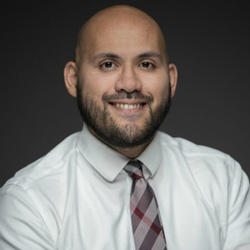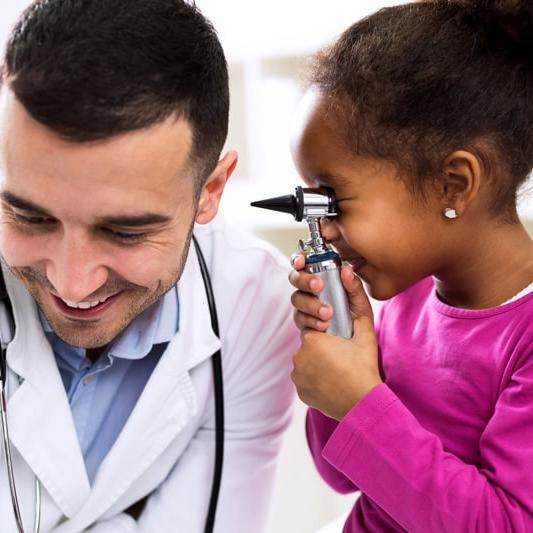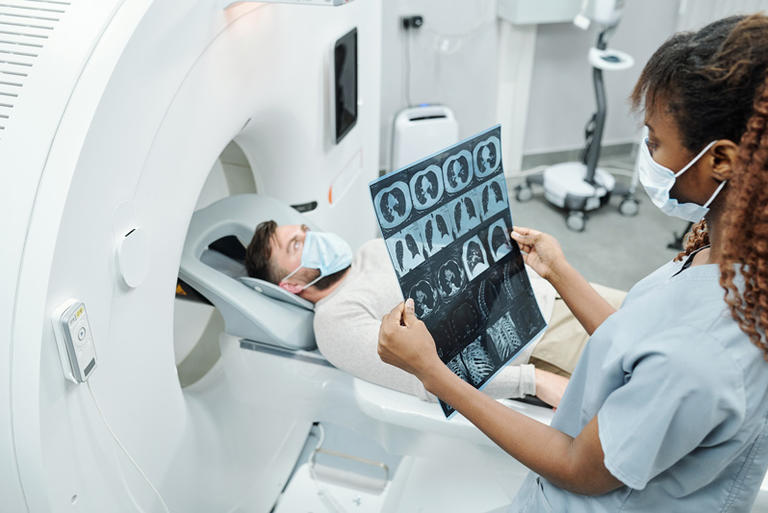Pediatricians understand the rapid growth and development of children, and they know that the treatment of medical conditions in children can be quite different from treating conditions in adults. If you are considering a career as a pediatrician, ask yourself these questions:
- Do you love working with children?
- Are you interested in the physical, emotional, and social well-being of kids?
- Are you curious enough to learn about numerous aspects of children’s medicine?
- Do you want to study a dynamic and constantly evolving science?
- Do you want a field that offers professional challenges and many specialized options?
- Do you want an intellectually stimulating and rewarding career?
- Do you want a career in one of the most in-demand fields of medicine?
If your answer to these questions is “yes,” then pediatrics may be the specialty for you.
What Does a Pediatrician Do?
Because pediatrics deals with all medical needs of children, it covers a broad spectrum of health services. And because children are physically and psychologically different from adults, pediatric care is different from the treatment of adults. Such diseases as chickenpox, measles, and mumps affect far more children than adults, and such conditions as bronchitis, the common cold, or a sore throat are treated differently in children than they are in adults. Pediatricians are skilled at the prevention, detection, and treatment of acute and chronic conditions, they work to reduce infant and child mortality, and they nurture the many aspects of child development.
Most pediatricians practice general pediatrics, covering children from birth to about age 16. For those who want to advance to a subspecialty, there are numerous options:
- Adolescent Medicine
- Child Abuse Pediatrics
- Developmental-Behavioral Pediatrics
- Hospice and Palliative Medicine
- Medical Toxicology
- Neonatal-Perinatal Medicine
- Pediatric Cardiology
- Pediatric Critical Care Medicine
- Pediatric Emergency Medicine
- Pediatric Endocrinology
- Pediatric Gastroenterology
- Pediatric Hematology-Oncology
- Pediatric Hospital Medicine
- Pediatric Infectious Diseases
- Pediatric Nephrology
- Pediatric Pulmonology
- Pediatric Rheumatology
- Pediatric Transplant Hepatology
- Sleep Medicine
- Sports Medicine
Pediatricians are also active in academic circles and participate in conferences and publications dedicated to advancing pediatric knowledge and therapeutic options.
HOW TO BECOME A PEDIATRICIAN
To become a pediatrician, you must first become a physician by graduating from an accredited medical school*—such as Ross University School of Medicine (RUSM). The steps to a medical degree at RUSM, which is located on the Caribbean island of Barbados, are the same as at United States-based schools: two years of medical science classes and two years of hands-on clinical training. For RUSM students, the medical sciences curriculum is completed at the Barbados campus; the clinical training can be completed at affiliated teaching hospitals in the United States.
During clinical training, RUSM students complete core rotations in internal medicine, surgery, pediatrics, family medicine, obstetrics/ gynecology, and psychiatry. Each student, then, selects from among 40 specialty elective clerkships to fulfill their remaining clinical requirements.
During the fourth and final year of medical school, students prepare for the next step in their medical education: residency. At RUSM, the Office of Career Advisement (OCA) helps students determine which residency specialty—such as pediatrics—suits them best. The OCA then helps students negotiate the National Resident Matching Program® (NRMP®)—a placement system which medical students who want to obtain licensure in the United States use to “match” with a medical residency. Residencies are required to become a licensed physician, and they last from three to eight years. A pediatric medicine residency is at least three years.
In 2021, RUSM had a first-time residency attainment rate of 92 percent for 2020-2021 graduates, a match percentage rate comparable with the overall match rate (93 percent) for medical schools in the United States. In recent years, RUSM MDs have matched with pediatric medicine residencies at such hospitals as Albert Einstein Medical Center in Pennsylvania; Brooklyn Hospital Center in New York; Driscoll Children’s Hospital in Texas; and the UCSF Fresno Center in California.
After the successful completion of pediatric training, qualified candidates are then eligible to become certified by the American Board of Pediatrics (ABP). Many board-certified pediatricians are members of the American Academy of Pediatrics. Doctors who want to subspecialize in a specific area of pediatrics must take additional years of fellowship training.
The ABP works with other specialty boards to create dual programs, and a doctor may combine pediatric training with another specialty to become “double-boarded.” ABP-approved combined training programs include:
- Internal medicine/ pediatrics
- Pediatrics/ anesthesiology
- Pediatrics/ dermatology
- Pediatrics/ emergency medicine
- Pediatrics/ medical genetics and genomics
- Pediatrics/ physical medicine and rehabilitation
- Pediatrics-psychiatry/ child and adolescent psychiatry
MEET A PEDIATRICIAN
Omar Jaber, MD, a 2013 RUSM graduate, is a pediatric attending physician at Children's National Hospital in Washington, D.C. We asked Dr. Jaber to describe the role of a pediatrician.
Q: Why did you decide to go into your specialty?
A: Children are the greatest gifts in life and parents entrust their most precious thing to me. I consider it a privilege to be able to care for them. Adult medicine is filled with complicated histories, poor adherence to medical care, and stubborn behavior. Children have an innocence about them, subject only to their circumstances, and I am proud to be one of the few people in a position to advocate on their behalf.
Q: Any advice to medical students considering the specialty?
A: Don't worry about the parents. There is a lot of negativity toward anti-vaxxers, helicopter parents, or overprotective relatives. In the end, we all want what's best for the child. As soon as everyone understands that concept, the decision-making becomes much easier and the relationship between the family and their pediatrician is much more worthwhile and rewarding.
Q: What’s the most rewarding part of your job?
A: I get to watch children and their parents grow. I love watching first-time parents become confident in raising their child, especially when they begin to have more children. I love watching the blank slate of a newborn baby blossom into toddlerhood and then, ultimately, adulthood. From first smiles to first foods; to first words and first steps; to first time using the potty; to first days of school all the way to last days of school (and sometimes even all the way to college graduation)—a child will always have a special relationship with his or her pediatrician. That is a priceless thing.
If you want to become a doctor, and a career as an pediatrician appeals to you, learn more about the RUSM MD Program and investigate the Office of Career Advisement. When you’re ready, take the next step on your path to a specialization in pediatric medicine: apply for admission to Ross University School of Medicine.
A Career in Pediatrics
What is a pediatrician’s normal routine? When learning about how to become a pediatrician it’s important to know about their work environment. Pediatricians may work in a clinic, hospital, or medical office, and some have their own private practice. A pediatrician’s time is spent caring for outpatients—from babies to teenagers—doing laboratory work, performing procedures and tests, discussing cases with other doctors, and visiting hospital wards.
Pediatricians must communicate regularly with patients and families, as well as social workers and teachers. Meetings and administration tasks absorb a lot of time, and hours are also spent consulting with other specialists, doing research, studying, and teaching. Many pediatricians work a typical 40-hour week, and some are also on-call—available for consultation at night or on days off. Flexible hours and workdays are more common in pediatrics than in any other medical specialty.
Because pediatricians diagnose and study a wide spectrum of illnesses and conditions, they can have a great impact on the individual lives of patients as well as overall community health.
Demand for Pediatricians
What is a pediatrician’s prospective job outlook like? The demand for pediatricians is as certain as the appearance of newborn children. In other words, pediatricians will always be needed. The American Medical Association (AMA) says that 91 percent of recent pediatric residents obtained one of their two most desired general practice positions. The AMA also reports a shortage of pediatric subspecialists, leaving many choices and opportunities for qualified doctors.
Pediatricians—like doctors in all medical fields—are an aging population, and as those doctors retire, the United States will see an increasing shortage of pediatrics specialists. In July 2020, an Association of American Medical Colleges report showed that one third of United States physicians are age 60 or older, and well over half—57 percent—are over 50 years old.
Now that you know the steps to becoming a pediatrician, you can make the decision on whether it’s the right career for you! Take the next step on your path to a specialization in pediatrics: apply for admission to the Ross University School of Medicine.
Related resources:





